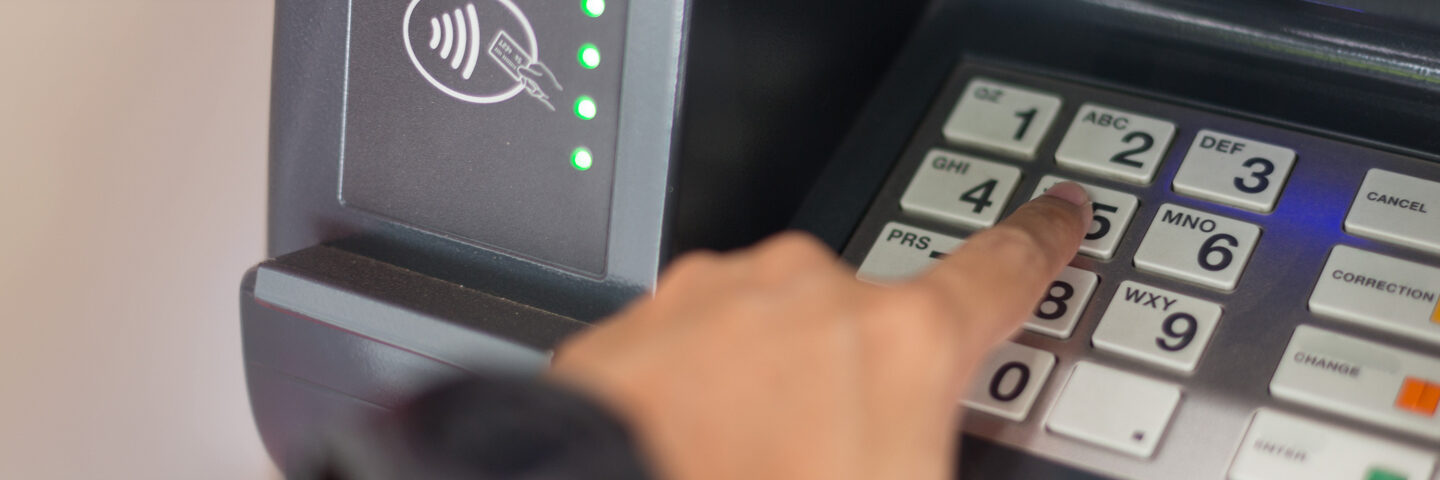Many people use credit cards or debit cards for a variety of purchases, such as buying groceries, online shopping or paying bills. But some people might not be aware of the risks of card skimming theft, particularly when using a credit card or a debit card at an ATM, gas station, restaurant or retail store. Card skimming is when thieves use a device installed on a card reader to steal your card data and use it to make fraudulent purchases. Fortunately, there are steps you can take to protect your personal data and financial health.
The first step in protecting your financial data is understanding what card skimming is and knowing the signs to look out for. A card skimming device can be added to card readers to capture information when a card is swiped at a gas pump, ATM, or other point of sale terminal. These devices read the magnetic stripe on your credit or debit card, which contains your name, card number, expiration date, and security code.
Warning Signs to Look Out For
You might be able to notice visual signs if a card skimmer is present, like a fake keypad placed over a real ATM keypad or even a tiny camera planted to record a PIN number when someone enters it into an ATM. Because card skimming thieves try to make these devices blend in with card readers, the skimming devices can be tricky to spot.
By being aware of areas that are at higher risk for card tampering and knowing the signs to look out for, you can help reduce your risk of card skimming fraud. Be sure to do a quick scan before swiping your card. Is the payment system loose, crooked or damaged? Does it look different than nearby payment systems? Is there a pinhole above the keypad where a camera could be located?
These are all red flags to keep an eye out for before using a card reader. Ultimately, it’s good to trust your gut. If a card reader looks suspicious, don’t use it.
Tips to Protect Yourself from Card Skimming
Even if a card reader looks safe, there are still some best practices to follow to protect your financial information:
- Pay with your card chip or use tap-to-pay instead of swiping: Using the chip on your card is safer than using the magnetic stripe because your information is encrypted in the chip, making it tougher to steal. You can also try using a mobile payment service such as Apple Pay™, Google Pay™ or PayPal®.
- Use gas pumps and ATMS in well-lit areas: Try to use gas pumps and ATMs in more visible areas and in sight of store employees. Card skimming thieves are more likely to tamper with devices that are harder for employees to see.
- Run your debit card as a credit card to avoid using your PIN: If you must use your debit card with your PIN, be sure to cover your hand when typing in the number to shield it from any potential cameras.
- Set up alerts to monitor activity on your credit and debit cards: In addition to regularly reviewing your credit and debit card statements for any suspicious transactions, sign up to receive alerts in real time to help you stay on top of any fraudulent activity.
What to Do If You Suspect Card Skimming
Even with precautions, it can still be possible to fall victim to card skimming theft. If you notice any fraudulent charges, there are several important steps to take:
- Contact your bank, credit union or card issuer right away. They can help freeze your credit card or debit card to prevent identity theft and additional unauthorized charges. Also, dispute any unauthorized charges, since you don’t have to pay for them if you notify your financial institution or card issuer quickly.
- Change your financial account passwords and PINs. This can help provide a layer of protection.
- Add a fraud alert to your credit report. You can receive a free credit report annually from each of the three major credit bureaus: Equifax®, Experian® and TransUnion®. Adding a fraud alert may prevent additional fraud.
- Alert the business where you believe the card skimming occurred. Staff will check their card readers for card skimming devices to help prevent additional theft.
Taking a few simple steps can help lower your risk of card skimming theft, but if it happens, your financial institution can help. For more information, or if you think you’ve been a victim of credit card or debit card fraud, check out additional resources from Bellco.
Apple Pay is a trademark of Apple Inc. Google Pay is a trademark of Google Inc. PayPal is a registered trademark of PayPal, Inc.
Equifax is a registered trademark of Equifax Inc. Experian is a registered trademark of Experian Information Solutions, Inc. TransUnion is a registered trademark of TransUnion LLC.



